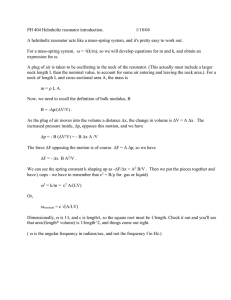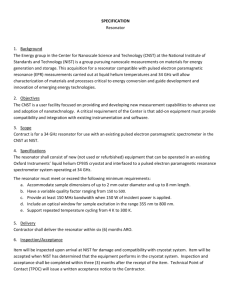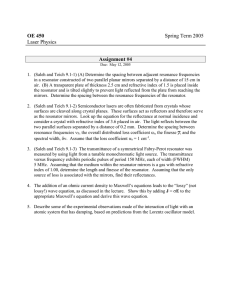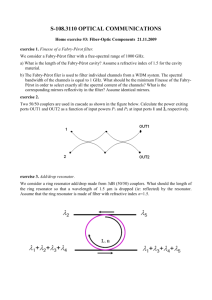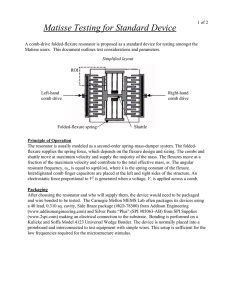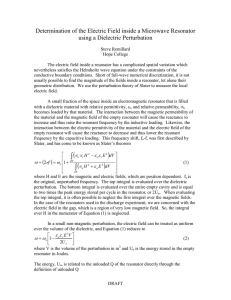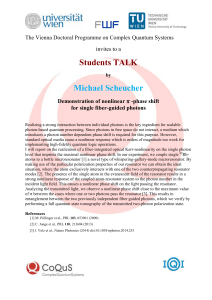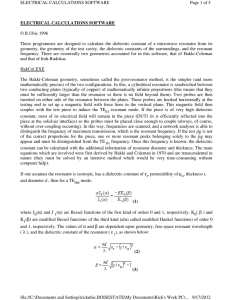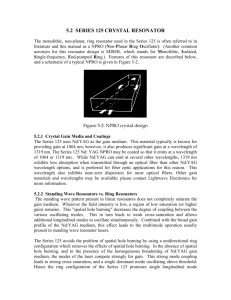Supplemental Material_revised
advertisement
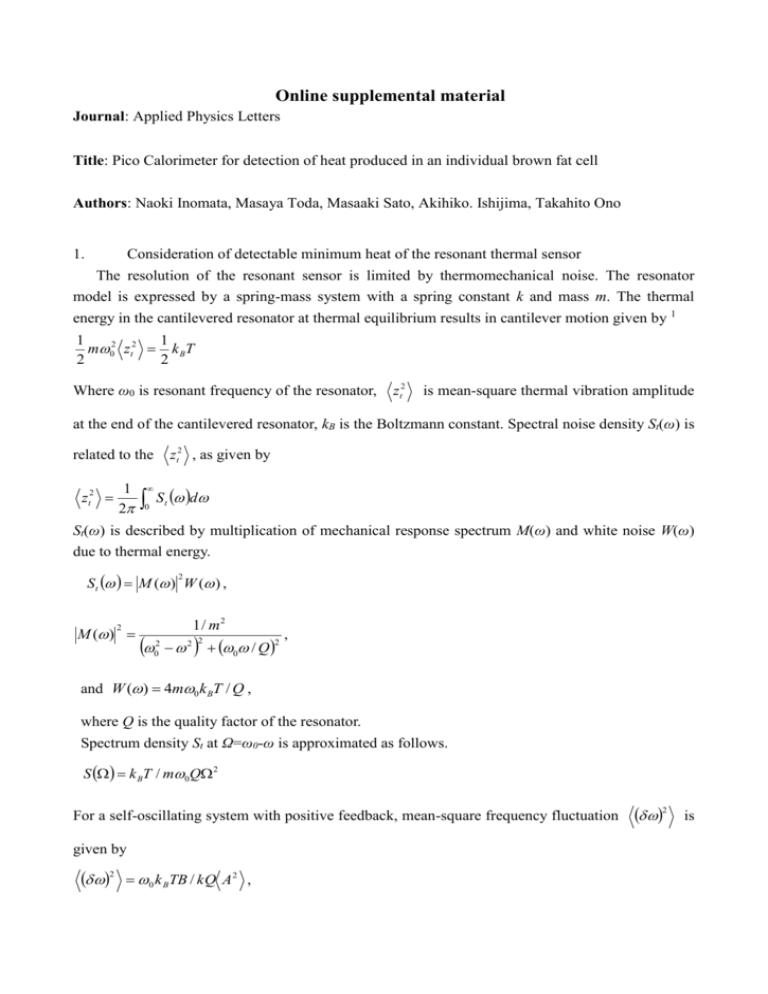
Online supplemental material Journal: Applied Physics Letters Title: Pico Calorimeter for detection of heat produced in an individual brown fat cell Authors: Naoki Inomata, Masaya Toda, Masaaki Sato, Akihiko. Ishijima, Takahito Ono 1. Consideration of detectable minimum heat of the resonant thermal sensor The resolution of the resonant sensor is limited by thermomechanical noise. The resonator model is expressed by a spring-mass system with a spring constant k and mass m. The thermal energy in the cantilevered resonator at thermal equilibrium results in cantilever motion given by 1 1 1 m02 zt2 k BT 2 2 Where ω0 is resonant frequency of the resonator, zt2 is mean-square thermal vibration amplitude at the end of the cantilevered resonator, kB is the Boltzmann constant. Spectral noise density St(ω) is zt2 , as given by related to the zt2 1 2 S d t 0 St(ω) is described by multiplication of mechanical response spectrum M(ω) and white noise W(ω) due to thermal energy. S t M ( ) W ( ) , 2 M ( ) 2 2 0 1 / m2 2 0 / Q 2 2 , and W ( ) 4m0 k BT / Q , where Q is the quality factor of the resonator. Spectrum density St at Ω=ω0-ω is approximated as follows. S k BT / m0Q 2 For a self-oscillating system with positive feedback, mean-square frequency fluctuation given by 2 0 k BTB / kQ A 2 , 2 is where B is the bandwidth, and A2 is the mean-square oscillation amplitude. On the other hand, the temperature coefficient of the resonant frequency αf is given by following. f 1 d . dT From the frequency fluctuation, corresponding temperature fluctuation T 2 T 2 is given by 2 f 0 . If the heat conduction efficiency heff from the sample to resonator is defined, the minimum detectable heat δQ is given by c V Q Si T 2 heff cSi V f heff 0 cp f heff 2 k BTB k0 Q A 2 cSi is the heat capacitance of Si, ρ is the density of Si, and V is the volume of the resonator, cp is the heat capacitance of the Si resonator. ω0, α0 are the resonant frequency, and the temperature coefficient of the resonator respectively.
